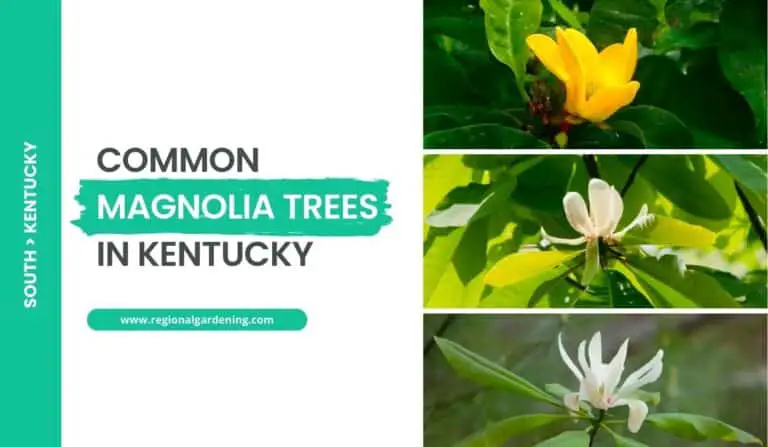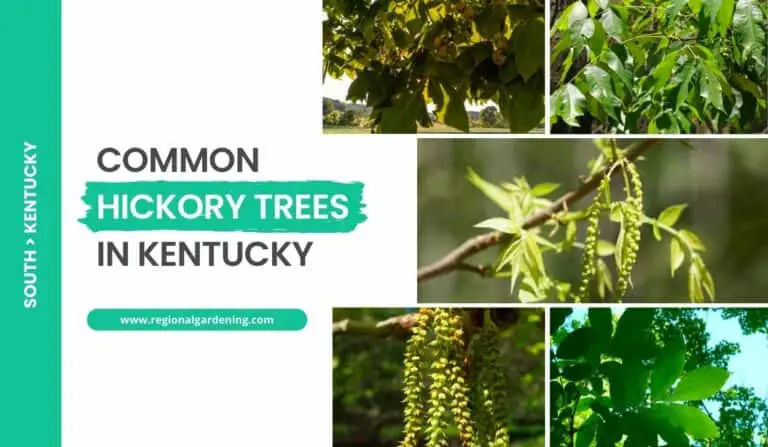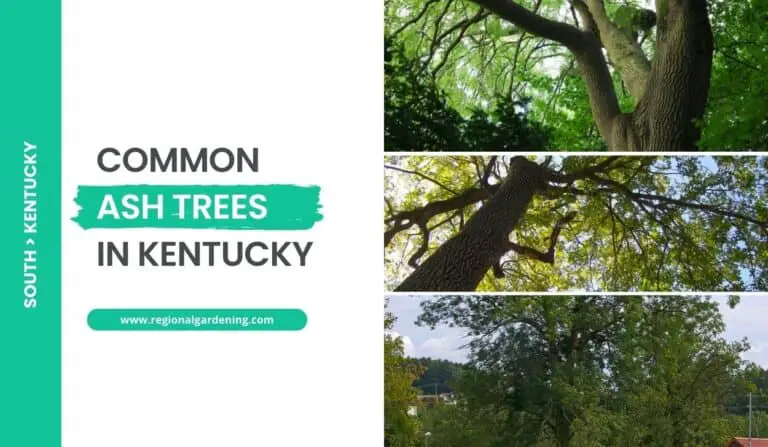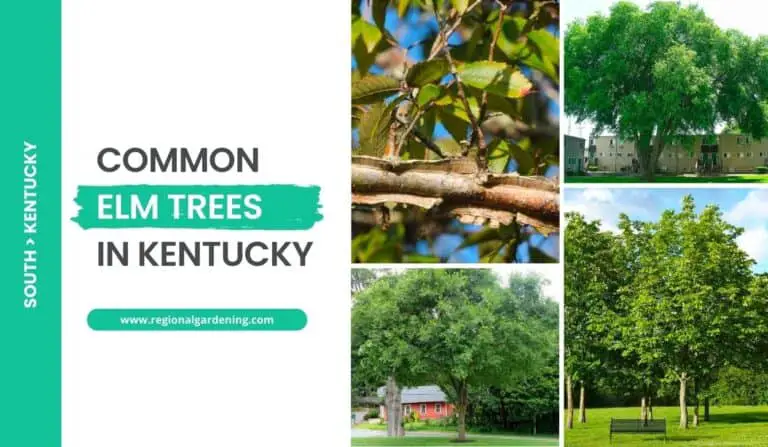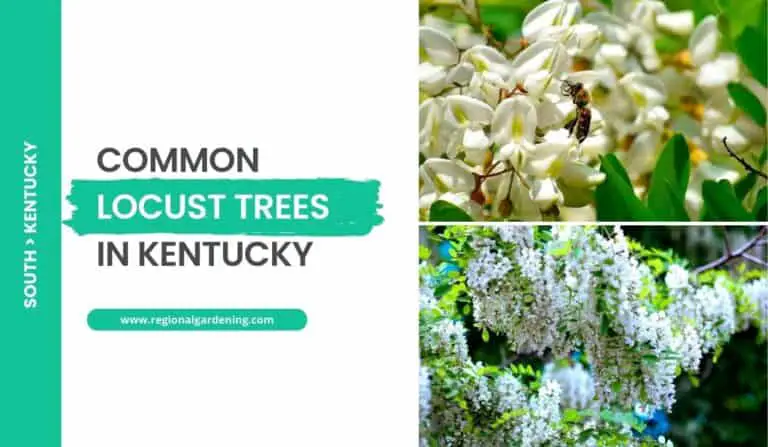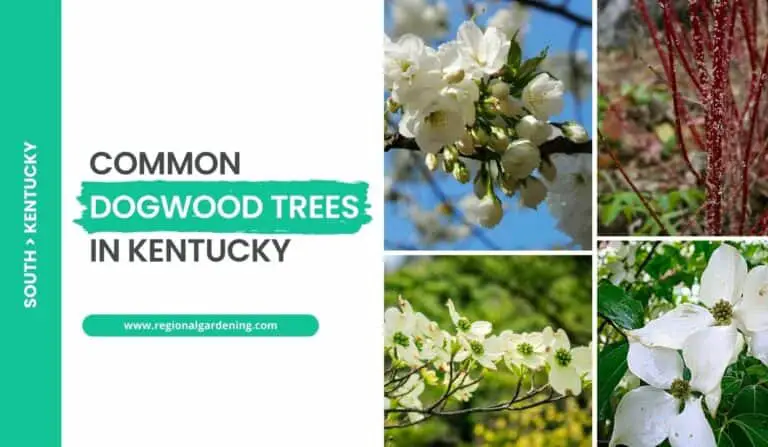5 Common Cedar Trees In Kentucky (Photos & Identification)
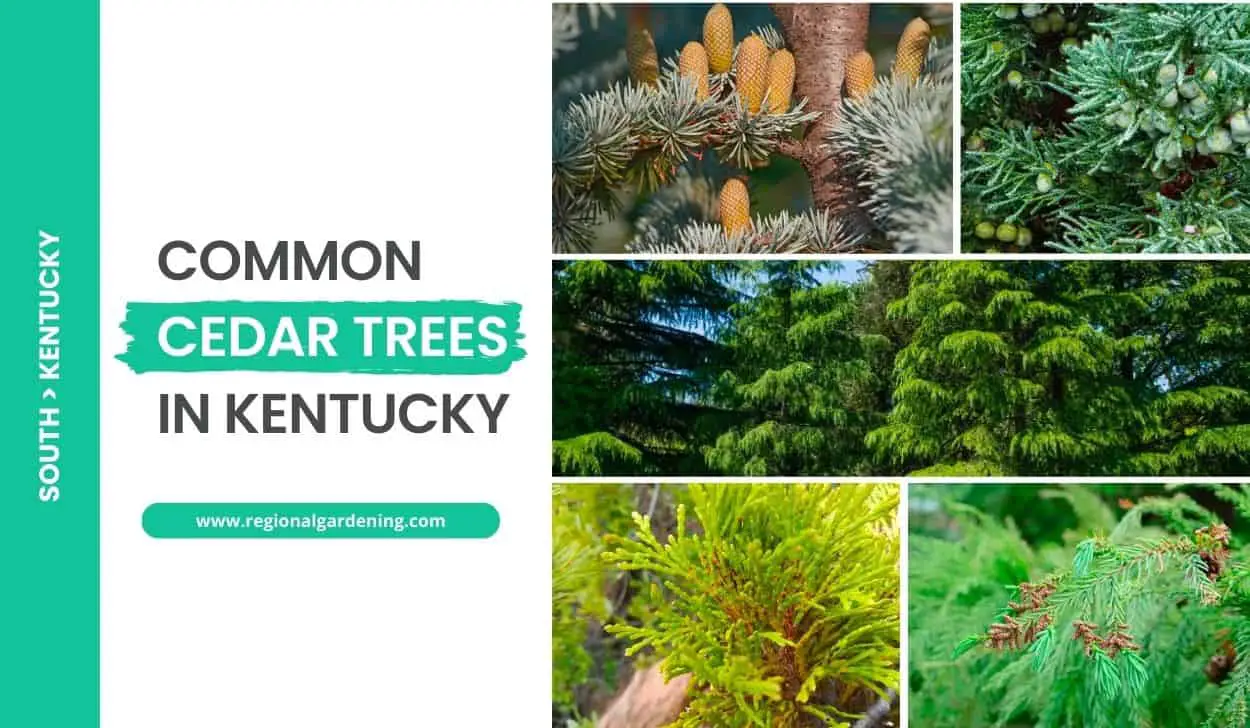
Cedar trees, often referred to as forest guardians, are a common coniferous species not only in Kentucky but throughout the United States. You have probably seen them in your neighborhood parks or on nature trails.
But did you know that not all cedars are the same? Within the state of Kentucky, there are various types of cedar trees. Interestingly, not all of these varieties are native to Kentucky.
In this article, we will look at the fascinating details of the most common cedar trees in Kentucky and provide you with descriptive photos to help you identify them.
So, let’s start with Eastern Red Cedar, the most common among cedar trees in Kentucky.
1. Eastern Red Cedar
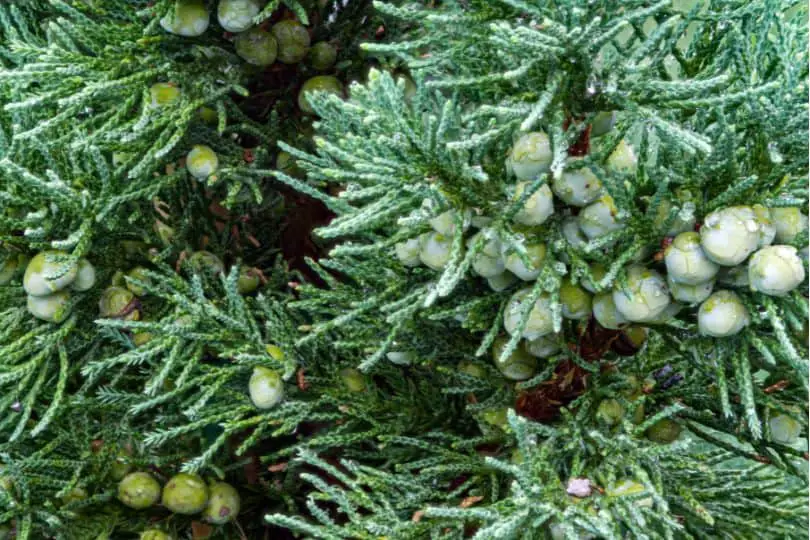
- Scientific Name: Juniperus virginiana
- Common Name(s): Eastern Red Cedar
- Mature Height: 30 to 40 feet
- Native Region: Eastern North America
- Flowers: No Flowers
- Fruit: Blue, berry-like cones
- Uses: Ornamental tree, timber, wildlife habitat, erosion control
The Eastern Red Cedar, technically known as Juniperus virginiana, is a unique tree that grows to be 30 to 40 feet tall when mature. It does not produce typical flowers, unlike flowering trees. This cedar, native to Eastern North America, is a versatile and durable plant with a wide range of applications.
The Eastern Red Cedar has a conical to columnar shape, which adds to its visual appeal. The tree’s blue, berry-like cones offer visual appeal. Its dense foliage and evergreen characteristics make it a popular landscaping choice, offering year-round greenery and acting as a windbreak.
Eastern Red Cedar thrives in a wide range of soil types, including poor and rocky soils, making it ideal for Kentucky landscapes. Because of its extensive root system, it performs an important role in avoiding soil erosion. The tree also acts as a habitat for wildlife, providing shelter and food.
Planting in well-draining soil and providing ample sunlight are two care advice for Eastern Red Cedar. The tree requires little care and is resistant to many pests and diseases. Pruning can be used to shape or regulate the size of the tree, but it often retains a tidy and compact form.
In terms of applications, the Eastern Red Cedar has historically been valued for its lumber, which is utilized in a variety of woodworking applications. Its wood is aromatic and decay-resistant, making it ideal for creating furniture, chests, and closets. Aside from its functional applications, the tree adds to the natural beauty of Kentucky gardens, contributing to the state’s diverse and resilient landscape.
2. Deodar Cedar
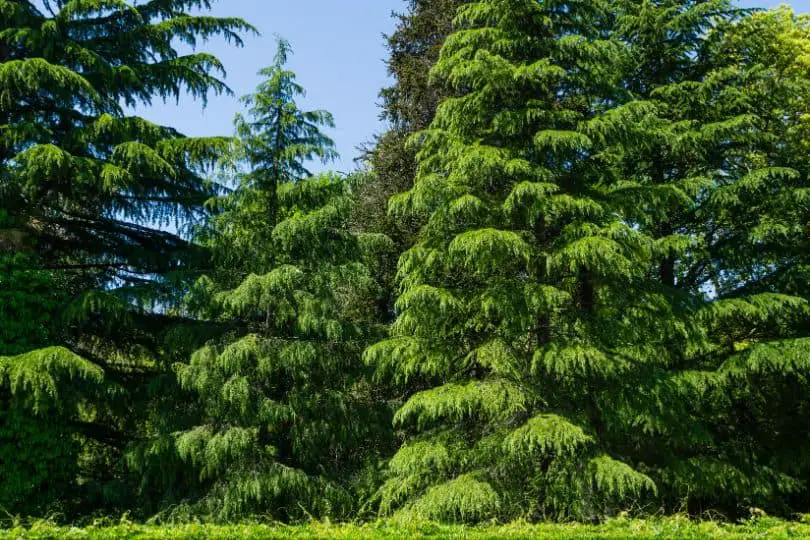
- Scientific Name: Cedrus deodara
- Common Name(s): Deodar Cedar
- Mature Height: 40 to 70 feet
- Native Region: Western Himalayas
- Flowers: Clusters of small, pale yellow to violet cones
- Fruit: Cones
- Uses: Ornamental tree, timber
The Deodar Cedar, scientifically known as Cedrus deodara, is a beautiful tree with a towering height ranging from 40 to 70 feet. This cedar species, native to the Western Himalayas, has found a home in Kentucky gardens, bringing a sense of grandeur to the scene.
The Deodar Cedar is a beautiful ornamental tree, distinguished by its pyramid-shaped appearance and pendulous branches. The tree produces clusters of small, pale yellow to violet cones, which add to its overall attractiveness. Because of its evergreen nature, it retains its beauty all year, making it a popular choice for landscaping.
In Kentucky, the Deodar Cedar prefers well-drained soil and full sunlight. It takes little maintenance, and its tolerance to a wide range of soil conditions increases its suitability in a variety of landscapes. Pruning can be used to modify the tree, but it retains a naturally symmetrical and appealing appearance.
Aside from its cosmetic significance, the Deodar Cedar has long been valued for its high-quality lumber. The wood is long-lasting, resistant to decay, and has an appealing grain pattern, making it popular for building and carpentry. Its fragrant properties contribute to its suitability for a variety of applications.
3. Incense Cedar
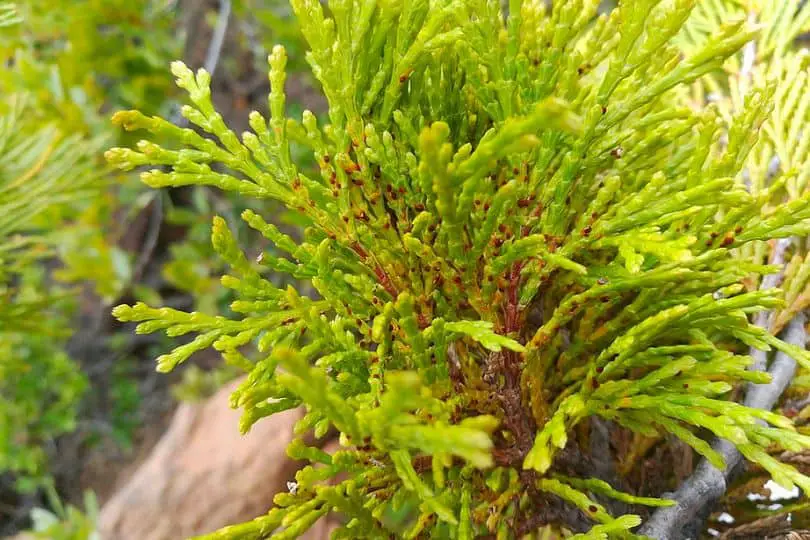
- Scientific Name: Calocedrus decurrens
- Common Name(s): Incense Cedar
- Mature Height: 50 to 100 feet
- Native Region: Western North America
- Flowers: Small, inconspicuous
- Fruit: Small, woody cones
- Uses: Ornamental tree, timber
The Incense Cedar, formally known as Calocedrus decurrens, is a stately tree recognized for its lofty stature (50-100 feet) and widespread presence in Western North America. The Incense Cedar, distinguished by its symmetrical, pyramidal shape, lends visual charm as well as functional utility to Kentucky landscapes.
While the blossoms of the Incense Cedar are modest and inconspicuous, it makes up for it with its characteristic, little, woody cones. The evergreen foliage of the tree adds to its all-year beauty, making it a popular choice for decorative landscaping. Its flowing branches form a pleasant silhouette, and the aromatic perfume of the wood adds to its allure.
The Incense Cedar is a resilient and low-maintenance tree that thrives in well-drained soils and is adaptable to a variety of climates. Its resistance to pests and pathogens adds to its toughness. Pruning can be done to keep the tree’s shape or size, but the tree preserves its natural beauty with little intervention.
The Incense Cedar has historical significance for its timber in addition to its esthetic qualities. The wood is aromatic and long-lasting, making it a popular choice for building and handicrafts. Its adaptability and straight grain make oak desirable for making furniture, fencing, and other outdoor structures.
4. Atlas Cedar
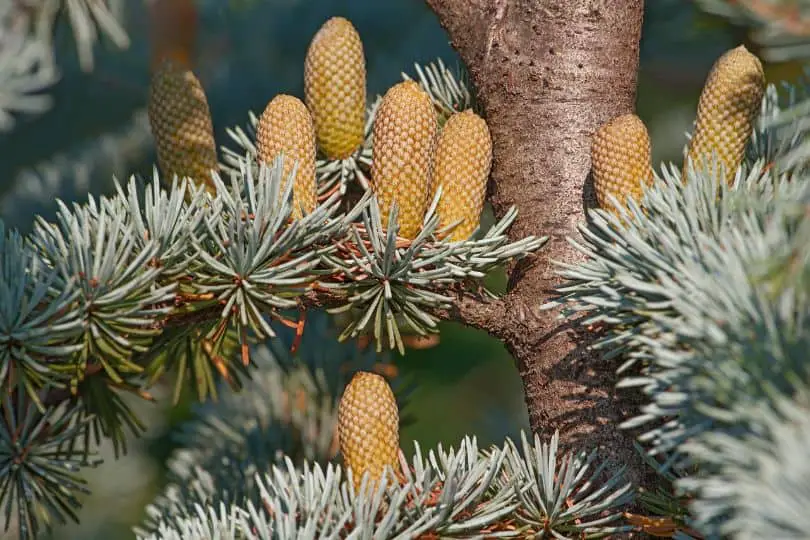
- Scientific Name: Cedrus atlantica
- Common Name(s): Atlas Cedar
- Mature Height: 40 to 60 feet
- Native Region: Atlas Mountains in Morocco and Algeria
- Flowers: Small, inconspicuous
- Fruit: Cones
- Uses: Ornamental tree, timber
The Atlas Cedar (Cedrus atlantica) is a magnificent coniferous tree recognized for its regal presence and beautiful attractiveness. With mature heights reaching from 40 to 60 feet, this cedar variety adds a touch of elegance and evergreen beauty to Kentucky settings.
The Atlas Cedar, which is native to Morocco and Algeria’s Atlas Mountains, has a characteristic pyramidal shape with gracefully arching branches. While its blooms are modest and inconspicuous, the tree’s cones stand out, providing visual appeal to its overall appearance. The silvery-blue needles add to its all-year appeal, making it a popular option for decorative planting.
The Atlas Cedar, which is adaptable to a variety of soils, thrives in well-drained situations, demonstrating its adaptability in Kentucky gardens. It takes little upkeep and is resistant to common pests and illnesses. Pruning can be done to shape the tree, but it will retain its naturally symmetrical and elegant aspect.
Aside from its aesthetic appeal, the Atlas Cedar is historically significant for its lumber. The wood, which is strong and resistant to rot, has been used in building and handicrafts. Its straight grain and fragrant properties make it ideal for making furniture, decks, and other outdoor structures.
5. Japanese Cedar
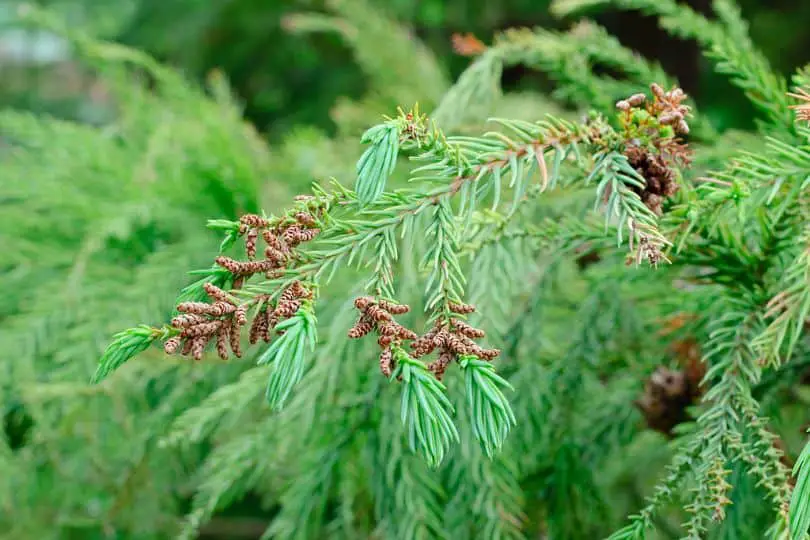
- Scientific Name: Cryptomeria japonica
- Common Name(s): Japanese Cedar
- Mature Height: 50 to 70 feet
- Native Region: Japan and China
- Flowers: Inconspicuous
- Fruit: Small cones
- Uses: Ornamental tree, timber
The Japanese Cedar, Cryptomeria japonica, is an elegant and towering conifer that adds a touch of the Far East to Kentucky settings. This cedar species from Japan and China is famous for its graceful form and various applications, with mature heights ranging from 50 to 70 feet.
The Japanese Cedar, with its pyramidal structure and deep green leaves, makes a dramatic ornamental statement in gardens throughout Kentucky. While its blossoms are unnoticeable, the little cones it produces add to its overall attractiveness. The evergreen nature of the tree offers year-round visual interest, making it a popular choice for landscaping.
The Japanese Cedar thrives in well-drained situations and is adaptable to a variety of soils, demonstrating its versatility in Kentucky’s different surroundings. It is generally low-maintenance and resistant to common pests and diseases. Although the tree naturally maintains a well-balanced and appealing appearance, pruning can be done to shape it.
Aside from its aesthetic appeal, the Japanese Cedar is significant for its lumber. The wood has traditionally been utilized in construction, woodworking, and the creation of beautiful furniture due to its resilience and straight grain. Its aromatic properties add to its attractiveness, offering a pleasant experience in areas where it is planted.
Similar Articles
- Maple Trees In Kentucky
- Dogwood Trees In Kentucky
- Berry Trees In Kentucky
- Oak Trees In Kentucky
- Hickory Trees In Kentucky
- Cypress Trees In Kentucky
- Ash Trees In Kentucky
- Elm Trees In Kentucky
- Pine Trees In Kentucky
- Magnolia Trees In Kentucky
- Birch Trees In Kentucky
- Locust Trees In Kentucky
Common Cedar Trees In Kentucky – Sources
The Regional Gardening team makes sure that the information in our articles is accurate by only using sources that are known to be trustworthy. Some of these sources are peer-reviewed journals from government agencies, well-known universities, and scientific research organizations.
- Common Kentucky Trees, Department of Forestry & Natural Sources, University of Kentucky
- Native Trees Of Kentucky, Department of Horticulture, University of Kentucky.
- Trees & Shrubs of Kentucky, Book By Mary E. Wharton and Roger W. Barbour, University Press Of Kentucky


